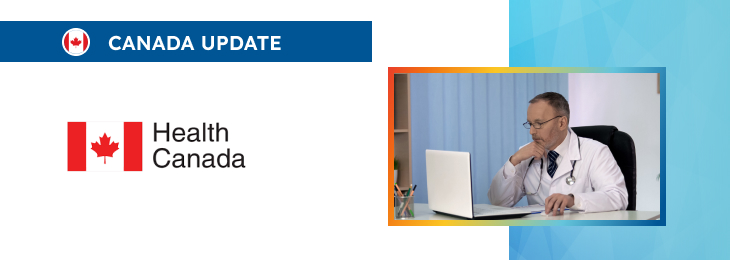The new article outlines the key considerations based on the class of the medical devices in question under the applicable risk-based classification system.

Table of content
Health Canada, the country’s regulating authority in the sphere of healthcare products, has published detailed guidelines dedicated to the application process to be followed by interested parties applying for a medical device license.
The document describes in detail the relevant regulatory requirements and also provides additional clarifications and recommendations to be taken into consideration by medical device manufacturers and other parties involved in order to ensure compliance.
However, it is also important to mention that the authority reserves the right to make changes to the guidelines and recommendations provided therein, should such changes be reasonably necessary to reflect corresponding amendments to the underlying regulation.
In particular, the document describes in detail special considerations to be taken into account when preparing and submitting an application depending on the class of the device subject to review.
Documentation and Review Process for Class II Devices
First of all, the document outlines the aspects related to Class II medical devices. According to the guidance, they include:
- Review Documents: Applicants must list and attach all relevant review documents as indicated in the application form, emphasizing the necessity of thorough documentation to facilitate the review process.
- Labeling Guidelines: The authority further emphasizes the importance of ensuring compliance with specific labeling guidelines referring to the regulatory standards for Class II devices. This includes general medical devices and in vitro diagnostic devices, ensuring clarity and consistency in device information.
- High-Level Disinfectants and Sterilants: For products such as high-level disinfectant solutions, sterilants, and contact lens disinfectants, the application must include either an existing Drug Identification Number (DIN) for marketed products or objective evidence proving compliance with regulatory requirements, underscoring the critical nature of safety and effectiveness in these solutions.
- License Application Fee: The document also provides detailed instructions on the license application fee form to guide applicants through the financial aspects of the application, highlighting the importance of accuracy in fee submission to prevent processing delays.

Class III Devices: Enhanced Review Document Requirements
As explained by the authority, the applicable regulatory framework provides additional requirements to be followed in the case of Class III medical devices due to the additional risks associated thereto.
In particular, Class III device applications necessitate a comprehensive listing of review documents, ensuring that applicants understand the depth of evidence needed, including safety and effectiveness data for both new and amended license applications.
Class IV Devices: Special Considerations
When it comes to Class IV medical devices, the document pays special attention to the aspects related to biological materials such products may contain.
As explained by the authority, applications for devices containing biological materials demand detailed information, reflecting the additional scrutiny associated with these types of devices due to their complex nature and potential impact on patient safety.
Universal Requirements for Class III and IV Applications
The document also outlines certain additional requirements that apply to both Class III and IV medical devices and relevant applications for a license. According to the document, these requirements include:
- Supporting Evidence: The document provides additional clarifications on the content and format of review documents for Class III and IV devices, including those that do not fall under the in vitro diagnostic device category, stressing the critical role of supporting evidence in demonstrating a device’s safety and efficacy.
- Fee Form Instructions: Same as for Class II applications, Class III and IV applications require a special fee payable by the applicant, so the authority provides the relevant instructions as well.
Conclusion
In summary, the present guidance document issued by Health Canada provides an extensive overview of the regulatory requirements to be followed when applying for a medical device license for a product subject to regulation as a Class II, III, or IV medical device under the existing legal framework. The authority additionally emphasizes the importance of ensuring completeness of the application in order to facilitate the review process and avoid delays with placing the product on the market.
How Can RegDesk Help?
RegDesk is a holistic Regulatory Information Management System that provides medical device and pharma companies with regulatory intelligence for over 120 markets worldwide. It can help you prepare and publish global applications, manage standards, run change assessments, and obtain real-time alerts on regulatory changes through a centralized platform. Our clients also have access to our network of over 4000 compliance experts worldwide to obtain verification on critical questions. Global expansion has never been this simple.

